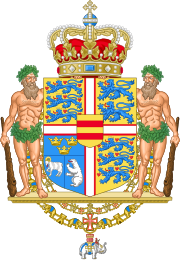 |
|---|
The Counties of Denmark (Danish: Danmarks amter) were former subdivisions of metropolitan Denmark and overseas territories, used primarily for administrative regions, with each county having its own council with substantial powers. Originally there had been twenty-four counties, but the number was reduced to roughly fourteen in 1970 – the number fluctuated slightly over the next three decades. In 2006 there were thirteen traditional counties as well as three municipalities with county status (the island of Bornholm, which was a county from 1660 until 2002, became a regional municipality with county powers, but only briefly from 2003 until 2006). On 1 January 2007, as a result of the strukturreformen, the counties were abolished and replaced by five larger regions which, unlike the counties, are not municipalities.
Copenhagen County comprised all the municipalities of Metropolitan Copenhagen, except Copenhagen Municipality and Frederiksberg Municipality which, on account of their peculiarity of being outside any of the traditional counties, had the equivalent of "county status". On 1 January 2007 these two municipalities lost their special status.
Greenland and the Faroe Islands are also part of the Danish Realm, but both enjoy internal autonomy. Both are largely self-governing, and each community sends two members to the Danish Parliament. The Faroe Islands obtained self-government in 1948; from 1816 to 1948 the islands had the status of a Danish county. Greenland changed from a colony to an overseas county in 1953, and subsequently gained home rule in 1979.[citation needed]